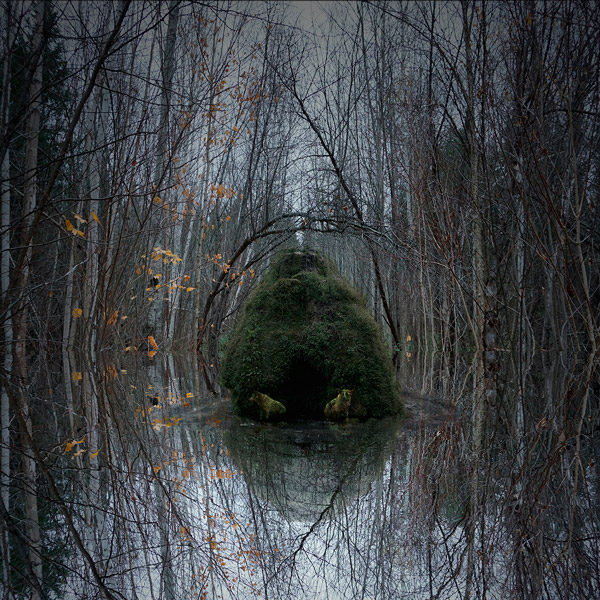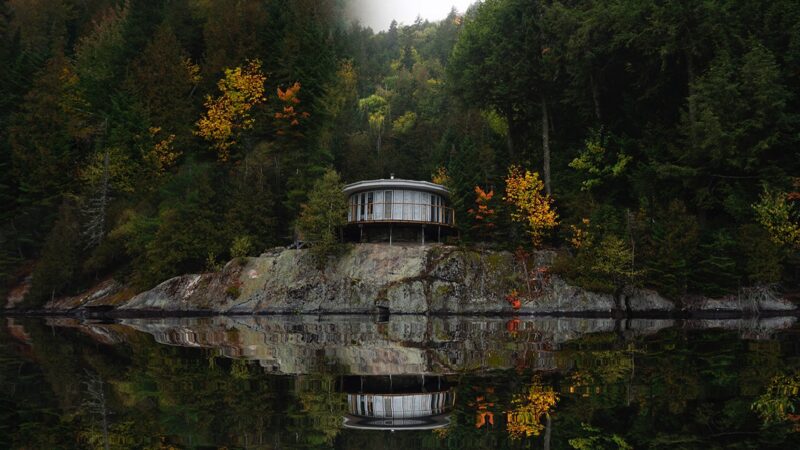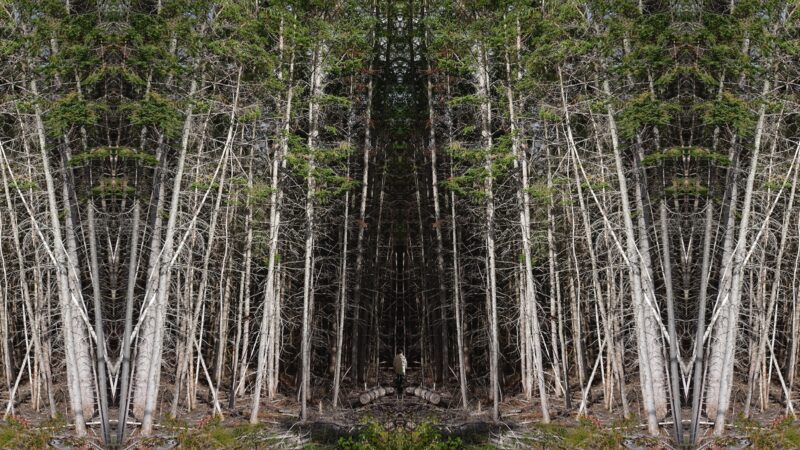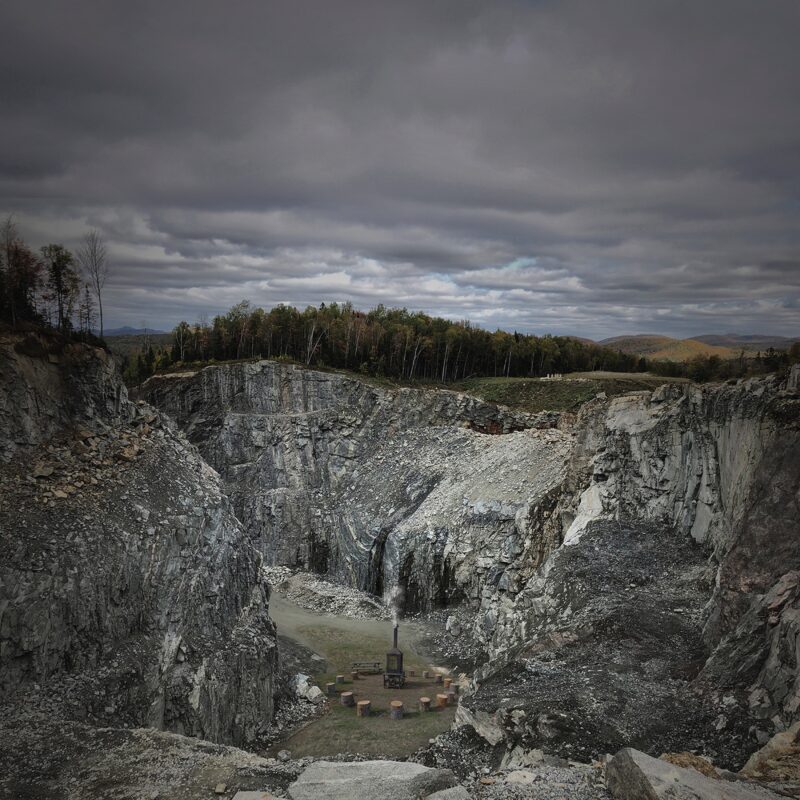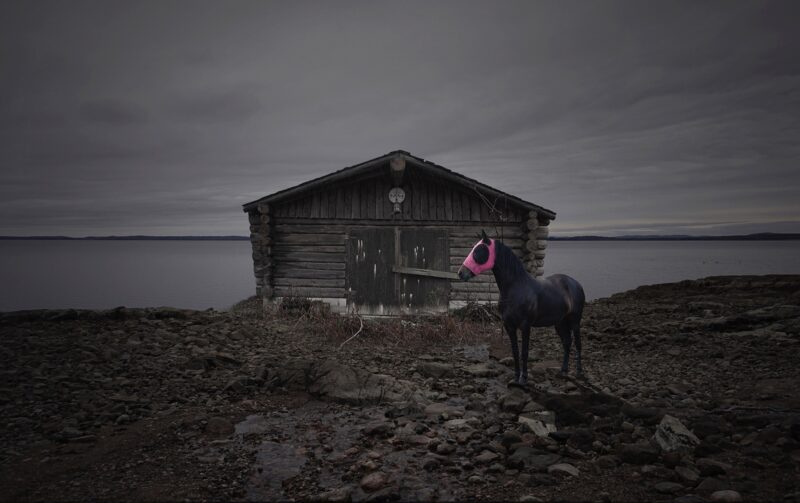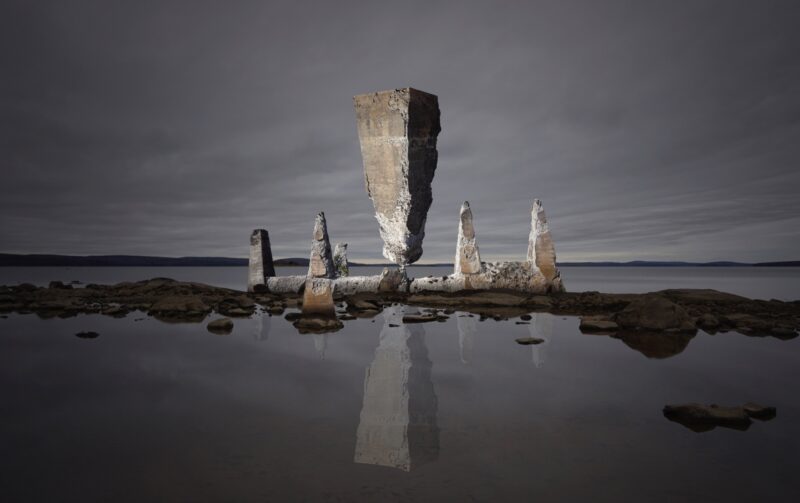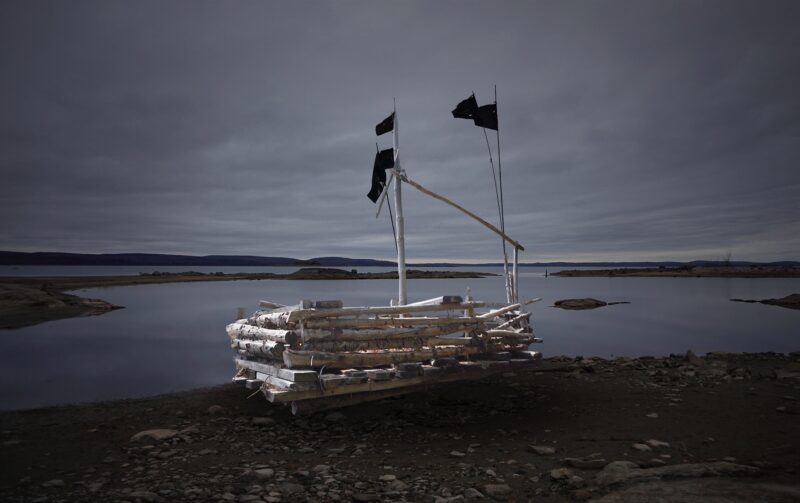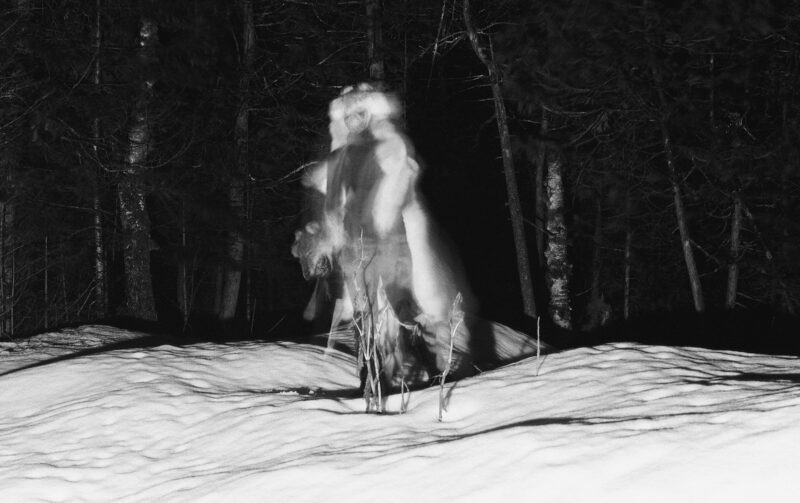[Winter 2021]
Dominique Sirois-Rouleau
Chosen to take part in the Missions photographiques des Laurentides project,1 Chloé Beaulac set herself the objective of finding the family cottage that had been part of her childhood. This quest motivated the month-long residency, during which her recollections tied to the Laurentian landscape were confronted with reality. For days, she travelled through the region, capturing each scrap of memory, instant of surprise, and moment of beauty. The Polaroids that she accumulated both document her trip and the influences of the project and testify to how remembrance is reconstructed.2
One would like to believe that Planque (2020) presents the result of Beaulac’s original search, but the building set on a rocky outcropping serves instead as a warning about detours in the memory’s process. Facts and emotions shift over time, causing reality to move into an almost-truth of its own. Beaulac’s world of subterfuges and substitutions replays this mechanism. Genuine expectations are betrayed by a fantastical interpretation of spaces. Here, the cottage takes centre stage. Uninhabited and reflected in the calm lake, it’s at odds with the restless vegetation that frames it. Its curtains, strangely, are drawn against the opulence of nature and its own isolation. Far from the presumed bucolic ambience of a child’s memories, the building ultimately resembles a hideaway for those who wish to neither see nor be seen. It is also bathed with light thanks to a single gap in the clouds above. The subject is presented from a strangely disquieting angle, as if, like all the works in the corpus, it was caught by surprise in the midst of transition between reality and invention.
Reconstructed Truths. Nature as seen by an urban child, admirable and splendid, is unveiled majestically in Galerie des glaces (2020). Beaulac’s manipulations are more perceptible here, as she enhances the grandiosity of the spot with a dreamlike touch. Cut out and doubled as if in the shards of a mirror, the forest is made even more vertiginous by a man in the centre who gives the measure of its height. The man’s presence evokes both a hunting ground and an invitation to be respectful, even prudent. Almost swallowed up by the play on reflections, he seems to be inserting himself into the scene, crossing through the mirror. The distortions imposed on the image both exacerbate human solitude and the brutal beauty of nature and materialize the invisible action of recollection on the elements. Touches of bright green embellish the long, grey trunks, which, like lampposts, illuminate the path to memory’s appropriation of the forest.
Beaulac works from images taken with a variety of digital and analog cameras. Reworked, reassembled, and amalgamated, these excerpts of truths form a fictional territory closer to her past appreciation of the places than to their current states. Through a reconstruction of memory and image, Beaulac develops a universal representation of the Laurentian landscape. Canyon (2020) merges pictures taken in the upper and lower Laurentians into a previously unseen yet familiar place. In an autumnal setting and a hilly landscape, a greystone quarry surrounds an improbably inviting sitting area. The composition allows for an uncommon intersection of uses of nature that are both devastating and innovative. These quarries, though despised, provide the stone highly sought after for the picturesque claddings of houses in the region, just as the logs smoking in the stove share an origin with the improvised armchairs summoned by their presence. Whether it is in the image or in reality, nothing is really limited to one truth, one status, or one use.
Awareness of the mutability of reality is also evident in the intriguing Monolithe (2020). Combining the remains of an old mill and the still expanse of the Baskatong Reservoir, the photograph reproduces the codes of modernist architecture, enshrined in the effects of civilization in decline. The delicate balance of the ruin, whose greying concrete is reflected in the surrounding environment, depicts nature’s gradual reclaiming of productive culture. The similar composition of Radeau (2020) amplifies this reading of a sterile struggle between the industrial world and nature. The latter, abused by the unchecked explosion of industry, seems motivated less by victory than by the recovery of its rightful place. The water has ebbed from under the makeshift raft, under the same unsettled sky as appears in Monolithe. The flood is either threatening or has just passed. Echoing the fragile yet affirmed verticality in the first work, this second image also portends hopefulness. The luminosity of the raft, the only element in the image struck with a beam of light, as if touched by the grace of God, also lends itself to an inverse interpretation: the storm is perhaps less an inevitability than a pretext for discovery. In this sense, Radeau recalls Beaulac’s crossing of the Laurentians, during which the time spent seeking her path was often more enthralling than finding it.
Unconscious Landscapes. During her travels through the region, Beaulac filled the blank spaces in her memory with new recollections imbued with her fantasized vision of the Laurentians. This fictional world takes a turn toward the magical, or even the mystical, with Sanctuaire du rocher (2020). A moss-covered boulder sits under a spidery network of branches in the centre of a stretch of water. Guarded by two wolves, the verdant rock metamorphoses into a witch’s hut, or perhaps an imagined cocoon. Beaulac’s setting predisposes the space to neither hostility nor peacefulness, but suggests an in-between of infinite possibilities. The forest therefore stands as a reflection of the chimeras that organize our perception of the world.
Just as time polishes memories, Beaulac’s image manipulations serve an obsessive transcription of the most ordinary places. In this sense, Baraque (2020) offers an enchanting appropriation of an abandoned cabin. In the greyish frame of nature calm before the tempest, a horse placidly stands guard outside the shanty. This magnetic reinterpretation of Alex Colville’s Church and Horse (1964) reveals the pictorial nature of Beaulac’s photographs. Each element is carefully arranged to integrate a drop of doubt into the image. The subjectivity of the composition is authentic to memory; reality is one belief among others.
The only image in the grouping unaltered by software, Esprit des loups (2020) has a performative dimension. Planned at its conception rather than edited in post-production, the composition is related less to memory than to the processes of permeating the present moment. The tall human silhouette accompanied by a wolf stands out from the winter night like a shamanic ghost. Similar to the installation Mémoires d’ombres (2020), in which two wolf pelts seem to doze under a complex web of feathers and shiny leaves, Beaulac concludes with a symbolic perspective on the work of memory. Whereas recollection wanders in the obscurity of the unconscious, the structure absorbs the thoughts of its spectators, while reflecting its own organized chaos into the space. Beaulac thus exposes a few glimpses of her own sense of belonging to the territory. Her altered portraits of the landscape, in short, are a way of anchoring evanescent memory and offering it a homeland in which to prosper. Translated by Käthe Roth
1 Missions photographiques is a travelling creation program piloted by the Rencontres internationales de la photographie en Gaspésie ; in 2019, the project took place in the Laurentians region.
2 Ces lieux qui nous habitent was presented at the Centre d’exposition de Val-David, September 16, 2020, to January 4, 2021.
Dominique Sirois-Rouleau, who holds a PhD in art history, is an independent curator and art critic. Her research on spectator-related activity, the notion of the object in contemporary art, and the socioeconomic conditions of practising art history has been presented at conferences and in publications about discourses and emerging arts. Director of the Hub Culture/Savoir of the Regroupement d’organimes culturels et d’artistes lavallois and a lecturer at UQAM, she also works in networking in academic research and art creation.
After graduating from Concordia University in 2010 with a BFA, Chloé Beaulac specialized in print arts. Inspired by etching, she uses photography, drawing, serigraphy, painting, installation, and sculpture to communicate her perception of the world. The recipient of many awards, she has presented her work in public art projects, solo exhibitions, and group exhibitions, and during artist residencies in Quebec, Canada, and abroad. She splits her time between the Montérégie and Estrie regions. www.chloebeaulac.com

